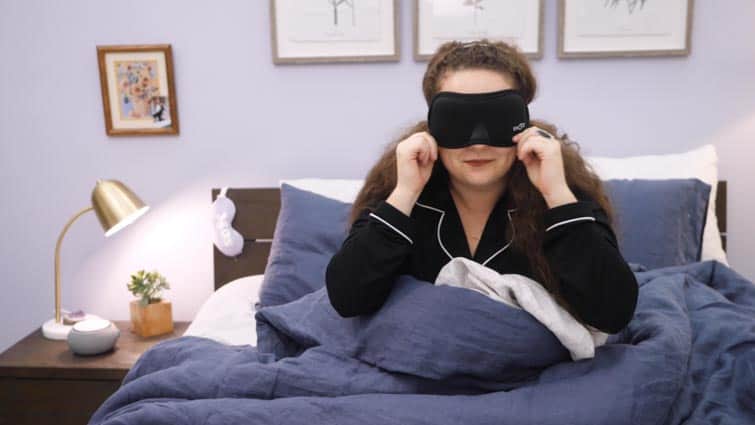
Maybe you suspect you have a sleep condition. But, like many, you really would prefer not to spend the night in some sleep lab, hooked up to wires and monitors to figure out what’s wrong. Companies see that need, and are moving closer to increasing access to home sleep testing, with a wearable device on your forehead.
This week, Australian company Compumedics got FDA clearance for their product, the Somfit device. The adhesive wearable test communicates physiological data while patients sleep in the comfort of their own beds (1). They are cleared to market their product in the U.S. now, and were already able to in Australia, the European Union, and New Zealand.
“Following FDA clearance for the Somfit device in the USA, Compumedics can now begin executing their commercialization strategy to capitalize on the underpenetrated sleep market with an initial focus on home sleep testing, before addressing other opportunities,” the Compumedics executive chairman and CEO David Burton stated in a release.
The company has been using their technology to help with sleep apnea, circadian rhythm, and insomnia related issues. They see themselves as having a few specific advantages in the market, the release states:
- Highly scalable: quality health software as a service business model
- Clinical grade data in an at-home device: Light and comfortable for the patient while enabling collection of high-quality signals to provide medical-grade (reimbursable) data
- Greater convenience: At-home monitoring eliminates the need for patients to travel to a hospital or sleep clinic, which can be time-consuming and inconvenient.
- Reduced cost: At-home monitoring is less expensive than hospital monitoring, as it eliminates the need for hospital staff and facilities.
However, the National Council on Aging (NCOA) warns that at home sleep tests might not be quite as accurate as those in a lab, so whether patients use this type or another brand, it’s important to keep that disclaimer in mind (2). This is especially important if you are on the border of having an issue, and need very specific numbers. The NCOA explains other types of at-home sleep tests that your doctor might prescribe before a forehead wearable is available, including all or some of these parts:
- A pulse oximeter to measure blood oxygen saturation levels and heart rate
- A recording device you wear like a watch
- A finger sensors which detects changes in your breathing patterns during sleep
For more information on the four types of tests, and a questionnaire, check out the NCOA’s resources, and more importantly, ask your doctor which is best for you.
Sources
1. Compumedics, “Somfit® Receives FDA Clearance to Market in the USA,” https://www.compumedics.com.au/en/asx-announcements/somfit-update2-2/; December 4, 2024.
2. Davis, Lauren Evoy; “What to Know About At-Home Sleep Apnea Tests,” National Council on Aging; https://www.ncoa.org/adviser/sleep/home-sleep-apnea-tests/; December 4, 2024.



























